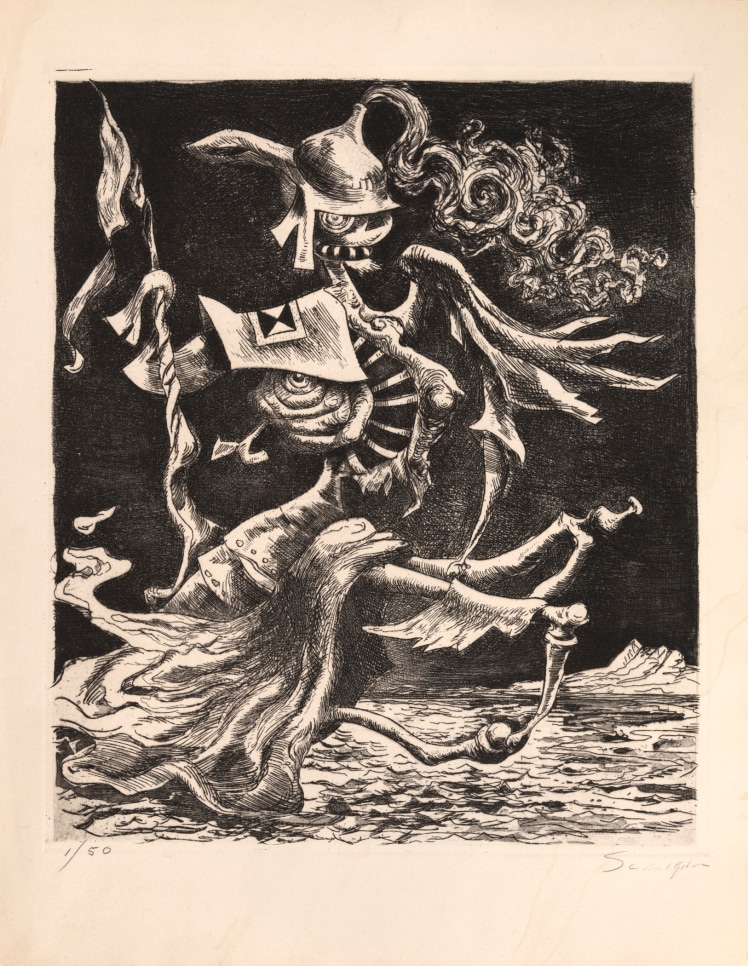
About
Kurt Seligmann (b.1900-d.1962) was a Swiss-American Surrealist painter and printmaker. He is most known for his “dance macabre” subjects, depicting medieval knights in violent rituals. Seligmann was born in Basel, Switzerland, in 1900 and studied at the École des Beaux Arts in Geneva. He joined the group Abstraction-Création Art Non-Figuratif in Paris, started by Hans Arp and Jean Hélion and eventually joined the formal Surrealist group in 1937.
At the start of World War II, Seligmann was the first European Surrealist to arrive in New York, and began to help his Surrealist colleagues in France find safety, as they were persecuted by the Nazi party. He created his most well-known works in the ‘40s, such as his series of six etchings of the Myth of Oedipus in 1944 accompanied by writing by esteemed art historian Meyer Schapiro.
Seligmann’s work can be found in many public collections including the Metropolitan Museum of Art, the Museum of Modern Art, New York, the Smithsonian American Art Museum, the Brooklyn Museum, and the Getty Museum.
